#tensorrt-llm
Explore tagged Tumblr posts
Text
TensorRT-LLM for Next-Gen Chatbots
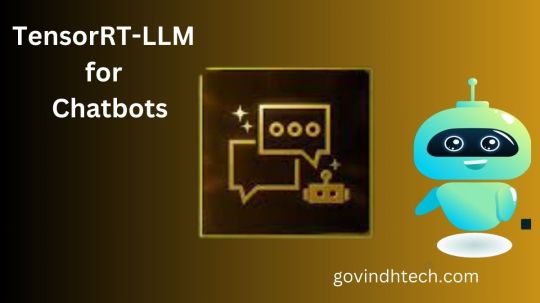
Discover RTX’s Chat’s Speed
A free, user-friendly chatbot demo that is tailored to your area is called Chat with RTX. It is constructed using RTX acceleration, TensorRT-LLM, and RAG functionality. It is compatible with many open-source LLMs, including as Mistral’s Mistral and Meta’s Llama 2. In a later version, support for Google’s Gemma will arrive.
This article is a part of the NVIDIA AI Decoded series, which showcases new RTX PC and workstation accelerations and hardware while attempting to demystify AI by making the concept more approachable. Chatbots are among the first widely used applications of AI, whether it is experiencing an iPhone moment.
Large language models and deep learning algorithms that have been retrained on enormous datasets the size of the internet itself which are capable of text and other content generation, translation, summation, prediction, and recognition—are what enable them. On PCs and workstations with NVIDIA GeForce and RTX GPUs, they may operate locally.
Large text summaries, data classification and mining for insights, and producing new text in a user-specified style, tone, or format are among the many skills that LLMs excel in. They can help with communication in any language, even ones that are not spoken by people, such genetic, computer, or protein sequences.
Later generations of LLMs were trained on several kinds of data, although the first models only dealt with text. Images, music, videos, and other material types may be recognised and generated by these TensorRT-LLM.
Among the first to introduce LLMs to a consumer audience were chatbots such as ChatGPT, which had a recognisable UI designed to interact with and react to natural language inputs. Since then, LLMs have been utilised to support scientists working on drug and vaccine research as well as developers writing code.
AI Models With TensorRT-LLM
However, such functionalities rely heavily on computationally complex AI models. With RTX GPUs—which are designed specifically for AI—combined with sophisticated optimisation methods and algorithms like quantisation, it is possible to build LLMs small enough and PCs strong enough to operate locally without an internet connection. Furthermore, a new generation of thin LLMs, such as Mistral, one of the LLMs enabling Chat with RTX, paves the way for cutting-edge performance with less power and storage requirements.
Why Are LLMs Important?
Numerous sectors, use cases, and operations may be tailored for LLMs. Their high-speed performance and adaptability allow them to improve performance and efficiency on almost all language-based jobs.
LLMs are often used in language translation applications like DeepL, which provide accurate results using AI and machine learning.
To improve patient care, medical experts are using textbooks and other medical data to educate LLMs. Retailers are using chatbots with LLM capabilities to provide excellent customer service. LLMs are being used by financial analysts to summarise and transcribe earnings calls and other significant meetings. And that’s just the very beginning.
Writing assistants based on LLMs and chatbots like Chat with RTX are revolutionising every aspect of knowledge labor, from legal operations to content marketing and copy writing. One of the first LLM-powered products that hint at the AI-assisted software development future was coding helpers. These days, initiatives like ChatDev combine LLMs with AI agents—smart bots—that function independently to assist with question answering or carry out online chores in order to create a virtual software business that operates on demand. Simply inform the system of the kind of app required, and watch it go to work.
Simple as Starting a Discussion
A chatbot like ChatGPT, which streamlines the use of LLMs using plain language and reduces human involvement to as easy as instructing the model what to do, is often how many people first encountered generative AI.
LLM-powered chatbots may create creative poems, aid with vacation ideas, prepare emails to customer care, and even help with marketing material.
Technological developments in picture production and TensorRT-LLM have expanded the capabilities of chatbots to include image analysis and generation, all while preserving the delightfully simple user interface. Simply submit a picture and request that the system examine it, or provide the bot a description of the image. It’s still conversation, but with images now.
Future developments will enable LLMs to do more arithmetic, reasoning, logic, and other activities, enabling them to decompose complicated requests into smaller, more manageable jobs.
Additionally, work is being done on AI agents, which are programs that can take a complicated request, divide it up into smaller ones, then interact with LLMs and other AI systems on their own to finish tasks. An example of an AI agent framework is ChatDev, however agents aren’t only for technical jobs.
Use RAG to Unlock Data
Considerably though chatbots and TensorRT-LLM are quite effective in general, they may be considerably more beneficial when paired with user data specific to each person. By doing this, they may assist in summarising years’ worth of bank and credit card bills, searching through thick user manuals to discover the solution to a technical query concerning a piece of hardware, or analyzing email inboxes to identify patterns.
Optimizing LLMs for a certain dataset may be done with ease and effectiveness via retrieval-augmented generation, or RAG.
RAG incorporates data retrieved from outside sources to improve the precision and dependability of generative AI models. RAG allows users to communicate with data repositories and allows an LLM to mention its sources by linking it to almost any external site. All the user has to do to engage with the chatbot is point it in the direction of a file or directory.
For instance, a typical TensorRT-LLM will be broadly knowledgeable about marketing strategies, best practices for content development, and fundamental understanding of a certain sector or clientele. However, it might assess the content and assist in creating a customized approach if it were connected via RAG to marketing materials assisting in a product launch.
Any LLM may be used with RAG as long as the application supports it. The Chat with RTX tech demo from NVIDIA is an illustration of how RAG may link an LLM to a private dataset. On computers equipped with a GeForce RTX or NVIDIA RTX professional GPU, it operates locally.
Local files on a PC may be quickly and easily connected to a compatible TensorRT-LLM by dumping files into a folder and directing the demo to that folder. By doing this, it may provide prompt, contextually appropriate replies to questions.
Results are quick and user data remains on the device because Chat with RTX runs locally on Windows with GeForce RTX PCs and NVIDIA RTX workstations. Chat with RTX allows users to handle sensitive data locally on a PC without requiring an internet connection or sharing it with a third party, as opposed to depending on cloud-based services.
Read more on Govindhtech.com
#tensorrt#artificialintelligence#llm#gemma#chatbots#chatgpt#govindhtech#news#llama2#technology#technews#technologynews#technologytrends
0 notes
Text
ok i want to learn - Loss Functions in LLMs (Cross-entropy loss, KL Divergence for distillation) Gradient Accumulation and Mixed Precision Training Masked Language Modeling (MLM) vs. Causal Language Modeling (CLM) Learning Rate Schedules (Warmup, cosine decay) Regularization Techniques (Dropout, weight decay) Batch Normalization vs. Layer Normalization Low-Rank Adaptation (LoRA) Prompt Engineering (Zero-shot, few-shot learning, chain-of-thought) Adapters and Prefix Tuning Parameter-Efficient Fine-Tuning (PEFT) Attention Head Interpretability Sparse Attention Mechanisms (BigBird, Longformer) Reinforcement Learning with Human Feedback (RLHF) Knowledge Distillation in LLMs Model Compression Techniques (Quantization, pruning) Model Distillation for Production Inference Optimization (ONNX, TensorRT)
4 notes
·
View notes
Link
0 notes
Photo
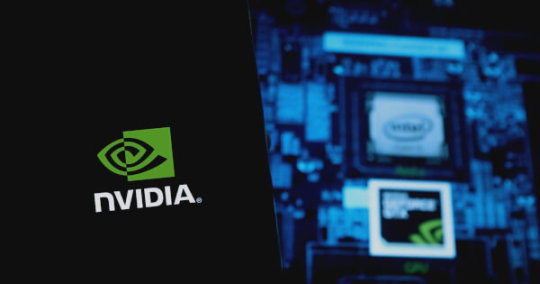
NVIDIA Enhances TensorRT-LLM with KV Cache Optimization Features
0 notes
Quote
2024年12月27日 12時05分 AI検索エンジン「ChatGPT search」とGoogle検索を62件のクエリで比較してみた結果 OpenAIがChatGPTによる検索エンジンとして「ChatGPT search」をリリースしたことを受け、検索エンジン最適化(SEO)の専門家であるエリック・エンゲ氏が62件のクエリを使用してChatGPT searchとGoogle検索の違いを分析し、結果を公開しました。 ChatGPT search vs. Google: A deep dive analysis of 62 queries https://searchengineland.com/chatgpt-search-vs-google-analysis-449676 ChatGPT searchはAIがウェブ上の情報を検索して内容をまとめてくれるというもの。実際の使い方については下記の記事で確認できます。 ついにAI検索機能「ChatGPT search」が一般公開される、マップ機能も追加 - GIGAZINE 市場調査を行う企業「SparkToro」の調査によると、人々がGoogle検索を使用する時の「意図」は以下の通り。 ・ナビゲーション検索(32.15%) ナビゲーション検索は、例えばGIGAZINEにアクセスする際に「GIGAZINE」でGoogle検索して検索結果からアクセスする場合のように、訪問したいサイトが決まっているユーザーがウェブサイトのアドレスを入力する代わりにGoogle検索を使用する場合の分類です。 ・情報提供(52.65%) 興味のあるトピックに関する情報を探す場合の分類です。 ・商業目的(14.51%) 何かの製品の情報を検索したり、複数の製品を比較したりするためにGoogle検索を行うと「商業目的」として分類されます。 ・執行(0.69%) SparkToroは「マーケ��ィングを行う上で価値のある検索」として、ユーザーがすでに何かの購入やサービスへの登録を決意した状態であることを示唆する検索を「執行」と別の分類に切り分けています。 エンゲ氏はSparkToroの調査結果を踏まえた上で、「情報提供」および「商業目的」に分類されるようなクエリに加え「ローカル検索」「コンテンツギャップ分析」「曖昧クエリ」という分類のクエリを合計62個用意。ローカル検索は「最寄りのピザ屋さんはどこ?」のようにユーザーの現在地が関係するクエリで、コンテンツギャップ分析は類似サイトの内容を比較するクエリ、曖昧クエリは「ジョーカーとは何ですか?」のように複数の意味が考えられるクエリです。 エンゲ氏はChatGPT searchとGoogle検索のそれぞれが返した結果に対し、下記の6つの基準で採点を行いました。 1:正確な情報を返したか? 2:重要な情報が欠落せずに含まれていたか? 3:回答に弱い部分は無かったか? 4:ユーザーのクエリの目的は解決されたか? 5:適切なフォローアップ情報を提供したか? 6:回答の全体的な品質はどうだったか? 分類ごとの結果は以下の通り。なお、クエリの中には複数の分類に重複して数えられているものがあるためクエリ数の合計が62個を超えています。 ・情報提供 クエリ数 42 勝者 Google ChatGPT searchの平均スコア 5.19 Googleの平均スコア 5.83 情報提供分野ではGoogleがわずかに優れているという結果になり、これまでGoogleが築き上げてきた情報検索における実績を改めて確かめることになりました。ただし、ChatGPT searchも多少の問題はありつつも良好なパフォーマンスを示したとのこと。 ・商業目的 クエリ数 16 勝者 Google ChatGPT searchの平均スコア 3.81 Googleの平均スコア 6.44 エンゲ氏は「Googleの方が製品やサービス関連の検索結果を表示する機能が優れている」と述べています。 ・ローカル検索 クエリ数 4 勝者 Google ChatGPT searchの平均スコア 2.00 Googleの平均スコア 6.25 Googleが多数のローカルビジネスのデータを確保していることが優位性へとつながっています。 ・コンテンツギャップ分析 クエリ数 4 勝者 ChatGPT search ChatGPT searchの平均スコア 3.25 Googleの平均スコア 1 類似サイトとのコンテンツの差を調べたり、検索結果ページの競合と比較したり、記事の内容を提案したりするクエリではChatGPT searchの方が優れているという結果になりました。ただし、全体的なスコアが低く、さらなる改善が必要とのこと。 ・曖昧クエリ クエリ数 7 勝者 ChatGPT search ChatGPT searchの平均スコア 6.00 Googleの平均スコア 5.29 ChatGPT searchは曖昧な言葉に対して複数の定義や解釈をより効果的に提示し、ユーザーに明確な情報を提供することができました。 今回の結果を踏まえ、エンゲ氏は「62個というクエリの数は極めて少ないサンプルであることに注意して欲しい」と述べた上で、「ChatGPT searchは情報提供クエリに関して良い回答をするものの、それでもGoogle検索の方が優れていた。結局、ほとんどの検索ではGoogleの方が優秀だと考えている」と結論付けています。 この記事のタイトルとURLをコピーする ・関連記事 Redditが掲示板上の話題を検索したり要約したりできるチャットAI「Reddit Answers」を発表 - GIGAZINE AIの台頭によって検索エンジンからサイトへのトラフィックが2026年までに25%減少すると調査会社が予測 - GIGAZINE GoogleのAIが検索結果をわかりやすく概説してくれる「AIによる概要」がついに日本語をサポート - GIGAZINE Metaが独自のAI搭載検索エンジンを開発中と報道される - GIGAZINE Mistral AIがチャットAI「Le Chat」を大幅アップデートしてウェブ検索機能や「FLUX1.1 [pro]」を利用した画像生成が可能に - GIGAZINE ・関連コンテンツ Google検索で「上手にググる」ための5つのポイントをソフトウェア工学の専門家が解説 Google検索チームに「Discoverに掲載されるには?」「長い記事は分割してもOK?」などを聞いてみた回答一覧まとめ Googleとフードデリバリーサービスが「広告」を使って地元のレストランから顧客を奪っているとの指摘 MozillaがYouTubeの動画推奨アルゴリズムを調査するために専用アドオンをリリース Microsoftの検索エンジンBingがTransformerからLLMとSLMの組み合わせに移行&TensorRT-LLMの統合を発表 Google検索結果の「AIによる概要」は全体の出現率が84%から15%に激減しているもののヘルスケア関連では63%と高水準 複数サイトのSEO関連情報比較を行う無料サービス「アクセス比較.jp」 Yahoo!とGoogleでの検索結果をRSSで出力できる「Search & RSS
AI検索エンジン「ChatGPT search」とGoogle検索を62件のクエリで比較してみた結果 - GIGAZINE
0 notes
Text
How I Passed the NVIDIA-Certified Associate: Generative AI LLMs Exam
Becoming a certified expert in generative AI is a significant milestone for any AI professional. The NVIDIA-Certified Associate: Generative AI LLMs (Large Language Models) Exam is designed to test an individual’s knowledge and proficiency in implementing and optimizing generative AI solutions using NVIDIA’s cutting-edge technologies. Anton R Gordon, a seasoned AI Architect with multiple certifications under his belt, shares his journey and strategies for acing this challenging certification.
Understanding the Exam
The NVIDIA-Certified Associate: Generative AI LLMs Exam focuses on foundational and practical aspects of generative AI using NVIDIA’s platforms. The key topics include:
Deep Learning Fundamentals: Understanding neural networks, training techniques, and optimization methods.
Generative Models: Proficiency in transformer models like GPT and BERT.
NVIDIA Frameworks: Familiarity with frameworks such as NVIDIA NeMo and TensorRT.
Deployment Strategies: Knowledge of deploying LLMs on NVIDIA GPUs for maximum efficiency.
Anton R Gordon emphasizes that understanding the real-world applications of these concepts is critical to performing well on the exam.
Preparation Tips
Anton’s success in earning this certification was the result of a well-structured preparation strategy. Here’s his step-by-step guide:
Leverage NVIDIA’s Resources
NVIDIA offers an array of learning materials, including online courses, technical blogs, and hands-on labs. Anton recommends starting with:
NVIDIA Deep Learning Institute (DLI): Take courses like Building Transformer-Based NLP Applications and Optimizing Deep Learning Models.
Documentation and Tutorials: Familiarize yourself with NeMo’s capabilities and use cases.
Master the Fundamentals
Before diving into advanced topics, ensure you have a strong grasp of:
Linear algebra and calculus for understanding model optimization.
Python programming, especially libraries like PyTorch and TensorFlow.
Neural network architectures and their training processes.
Anton advises dedicating at least two weeks to brushing up on these basics.
Practice with Real-World Scenarios
Hands-on experience is indispensable. Anton recommends:
Building transformer models using NeMo.
Fine-tuning pre-trained LLMs on domain-specific datasets.
Experimenting with deployment on NVIDIA GPUs using TensorRT.
Mock Exams and Community Engagement
Anton R Gordon stresses the importance of taking mock exams to identify weak areas. Additionally, participating in NVIDIA’s AI community forums can provide valuable insights and support.
Exam-Day Strategy
On the day of the exam, Anton suggests the following:
Time Management: Allocate time wisely for each section.
Focus on Practical Questions: Prioritize questions that test real-world application skills.
Stay Calm: Maintain composure to avoid mistakes under pressure.
Benefits of Certification
Achieving the NVIDIA-Certified Associate: Generative AI LLMs credential has numerous advantages:
Career Growth: Enhances your professional credibility and opens doors to advanced roles.
Technical Expertise: Demonstrates proficiency in deploying LLMs efficiently.
Networking Opportunities: Connects you with NVIDIA’s vibrant AI community.
Anton R Gordon attributes much of his career success to certifications like this, which validate and showcase his technical skills.
Conclusion
Passing the NVIDIA-Certified Associate: Generative AI LLMs Exam is a challenging but rewarding achievement. By following Anton R Gordon’s preparation strategies—leveraging resources, mastering fundamentals, and gaining hands-on experience—you can position yourself as an expert in generative AI. As the demand for AI professionals continues to grow, certifications like this are key to staying ahead in the competitive tech landscape.
0 notes
Text
Nvidia Open-Source LLM - GPT-4 Rival
Join the newsletter: https://avocode.digital/newsletter/
Introduction to Nvidia's Open-Source LLM
The tech world is abuzz with excitement as Nvidia, a leader in computing power and graphics processing, has officially released its open-source Large Language Model (LLM), which many are calling a rival to OpenAI's famed GPT-4. This strategic move marks Nvidia's deeper foray into the realm of artificial intelligence, positioning itself as a formidable competitor in the AI landscape. With advancements that suggest it might be on par with, or even surpass, current industry standards, this innovation has captivated both developers and tech enthusiasts alike.
Why Nvidia's Move Matters
Nvidia's decision to introduce an open-source LLM is significant for several reasons: 1. Democratization of AI technology: By releasing this model as open-source, Nvidia is enabling developers, researchers, and organizations across the globe to access cutting-edge AI technology. This accessibility fosters innovation and collaboration across various sectors such as healthcare, finance, and entertainment. 2. Competition Drives Innovation: With GPT-4 setting a high standard, Nvidia's entry into the space shows healthy competition. This rivalry pushes both companies to continuously improve and innovate, benefiting the entire tech ecosystem. 3. Leverage of Computational Power: Nvidia is renowned for its high-performance GPUs. By integrating its LLM with its hardware, it promises unparalleled performance and efficiency, setting a new benchmark in AI processing power.
Nvidia's LLM Features and Capabilities
Nvidia's open-source LLM brings several innovative features to the table:
Advanced Natural Language Processing
The model boasts highly sophisticated NLP abilities, capable of understanding and generating human-like text. Its prowess in language comprehension and generation makes it ideal for applications ranging from chatbots to complex data analysis.
Enhanced Scalability
Built to be scalable, Nvidia's model can be deployed across various platforms, from personal computers to large data centers. This flexibility ensures that businesses of all sizes can leverage its capabilities without sacrificing performance or incurring excessive costs.
Integration with Nvidia's Ecosystem
The open-source LLM seamlessly integrates with Nvidia's existing ecosystem. Developers can take advantage of Nvidia's CUDA and TensorRT for efficient deployment, while the model benefits from the acceleration provided by Nvidia GPUs. This symbiosis results in faster training times and real-time AI applications.
Comparing Nvidia's LLM with GPT-4
While Nvidia's open-source endeavor invites comparisons to OpenAI's GPT-4, there are distinct differences that merit attention: -
Open-Source Approach: Unlike GPT-4, which is proprietary, Nvidia's LLM is open-source, encouraging innovation and adaptation across diverse user groups.
-
Hardware Optimization: Nvidia's model is optimized for its GPU architecture, providing potentially superior performance metrics in some scenarios compared to GPT-4.
-
Community Involvement: By allowing a broader range of contributions and experiments from the tech community, Nvidia’s model could evolve rapidly in ways that GPT-4 may not.
Potential Applications
The possibilities with Nvidia's LLM are endless, spanning multiple industries and applications:
Healthcare
In healthcare, the LLM can be utilized for accurate diagnostic predictions by analyzing patient data and medical literature to provide insights and potential treatment plans.
Automated Customer Service
Businesses can customize the LLM to develop intelligent chatbots and virtual assistants that offer personalized customer interactions, enhancing user satisfaction and operational efficiency.
Content Creation
The model's sophisticated language generation capabilities can aid media companies by streamlining content creation processes, aiding in the production of articles, scripts, or even creative writing projects.
Challenges and Considerations
While the potential benefits of Nvidia's open-source LLM are substantial, there are challenges and considerations to address:
Data Privacy and Security
With AI models handling sensitive data, ensuring strict adherence to data privacy laws and using secure data handling practices is crucial.
Ethical Concerns
Like other AI models, Nvidia's LLM must contend with ethical concerns such as bias and misinformation. Developers need to actively work towards minimizing biases in training data and ensuring the responsible use of AI technology.
The Future of AI with Nvidia's Open-Source LLM
As Nvidia steps forward with its LLM, the future of AI appears increasingly dynamic and collaborative. The open-source model not only levels the playing field by providing access to advanced AI technology but also motivates other tech giants to innovate at a similar pace. In conclusion, Nvidia's introduction of its open-source LLM signifies a pivotal moment in the AI industry. By making sophisticated AI accessible and encouraging a collaborative spirit, Nvidia is not only aiming for parity with GPT-4 but also charting a new course for AI development, one marked by openness and innovation. This development represents a quantum leap forward in how LLMs can be built, shared, and utilized across industries, setting the stage for an exciting future in artificial intelligence. Want more? Join the newsletter: https://avocode.digital/newsletter/
0 notes
Text
Chat with RTX: Create Your Own AI Chatbot
We hope you enjoyed this article about Chat with RTX, NVIDIA and generative AI. Please share your feedback, questions, or comments below. We would love to hear from you and learn from your experience.
Image Source – Newspatron Creative Team AI-Generated Image for representative purpose [Read About Us to know more] Do you want to have your own personal assistant, tutor, or friend that can answer any question you have, help you with any task you need, or entertain you with any topic you like? If yes, then you should check out Chat with RTX, a free tech demo from NVIDIA that lets you create…

View On WordPress
0 notes
Text
Innovative AI-Ready Precision Workstations with NVIDIA GPUs
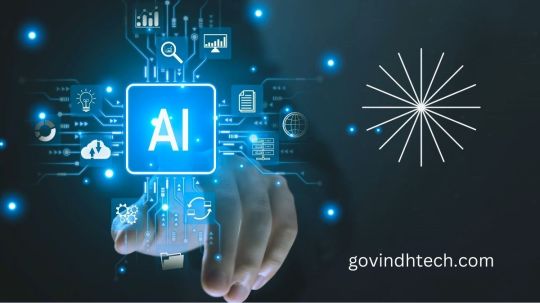
AI-Ready Precision Workstations Performance
A combination of AI-ready Precision workstations and RTX-accelerated AI-development tools is a great method for software developers to get a head start on the production and use of artificial intelligence applications. This combination is both rapid and straightforward. In light of the recent announcements made by NVIDIA, which aim to facilitate the adoption of large language models (LLMs) by offering enhanced performance and efficient processing of AI-ready Precision workstations, they are overjoyed to make these announcements. By using generative artificial intelligence, these improvements make it possible for software developers to construct unique apps and services.
Earlier this week, NVIDIA made the announcement that enhancements for the Gemma family of models are now available across all NVIDIA AI platforms. Among the most recent additions to Google’s open model portfolio, these models are state-of-the-art lightweight open language models with two billion and seven billion parameters. They are capable of running on a wide variety of platforms, ranging from Dell Precision AI-ready Precision workstations to Dell scalable AI server infrastructure.
By highlighting the strategic use of TensorRT runtime to boost the performance of various latent learning models (LLMs), such as Stable Diffusion XL (SDXL) Turbo and latent consistency models, which are two widely preferred approaches for speeding Stable Diffusion, they are contributing to the forefront of innovation. Furthermore, TensorRT-LLM has been used for the purpose of RTX-acceleration of text-based models, this includes Llama 2, Mistral, and Phi-2.
Bringing these models to you is the entryway to the possibilities that are provided by the entire AI portfolio that Dell provides. Developers are provided with a wide variety of tools to make their artificial intelligence projects more successful by Dell. Whether it’s taking use of cutting-edge AI development tools, choosing powerful workstations, or venturing into the realm of LLMs, Dell’s dedication to innovation ensures that developers have the resources they need to confidently traverse their path through the world of artificial intelligence.
With the TensorRT engines operating on the most intelligent, secure, and manageable commercial PCs in the world, Dell with NVIDIA provides a solid foundation for accelerated prototyping and exploration in the rapidly expanding world of artificial intelligence. This foundation enables one to easily access moderately complex development pipelines, which are typically difficult to enable from scratch.
A retrieval-augmented-generation (RAG) tool known as Chat with RTX and the NVIDIA AI Enterprise software that is presently in shipping are two examples of the plethora of tools that are available to developers via NVIDIA’s extensive ecosystem. With the future AI Workbench, developers will be able to quickly construct, collaborate on, and repeat generative artificial intelligence and data science projects. This is something that they can look forward to very much.
A few clicks are all that is required for developers to scale up their work from a local workstation or RTX PC to the cloud or a data center. The beta version of AI Workbench is not yet available. The NeMo framework, NVIDIA RAPIDS, TensorRT, and TensorRT-LLM are all integrated with GPU-accelerated development software via these tools. This allows you to fine-tune these LLMs and deploy them for your particular use case.
This program is a terrific example of what is possible when artificial intelligence is applied to your data while being protected by your firewall. It is a quick way to achieve higher levels of productivity, business insight, and efficiency. To be successful in the rapidly developing field of artificial intelligence, it is essential to have access to the appropriate tools. The combination of speed, dependability, and scalability that Dell AI-ready Precision workstations for artificial intelligence development provide is unrivaled.
These workstations are accelerated with NVIDIA RTX GPUs. By delivering end-to-end AI solutions and services that are tailored to meet clients wherever they are in their AI journey, Dell Technologies provides the world’s biggest portfolio of artificial intelligence (AI) solutions, ranging from desktop to data center to cloud.
FAQS:
AI-ready Precision workstations are what exactly?
In addition to having strong CPUs, enough memory, and NVIDIA RTX GPUs, these high-performance workstations are built expressly for AI applications that are particularly demanding.
The use of AI-ready Precision workstations that are equipped with NVIDIA GPUs brings around what advantages?
Performance that is noticeably faster: RTX graphics processing units (GPUs) speed up artificial intelligence operations like as training, inference, and data analysis, which results in both greater productivity and speedier results. Increased dependability and stability: Precision workstations are designed for professional usage, which guarantees a smooth operation and little downtime during tasks that are of crucial importance. Capacity to accommodate future requirements: These workstations are capable of being customized with a wide range of components in order to accommodate the increasing processing requirements.
For the creation of artificial intelligence, which software packages are provided or suggested on these workstations?
The NeMo framework, NVIDIA RAPIDSTM, TensorRT, and TensorRT-LLM are some of the NVIDIA RTX-accelerated artificial intelligence development tools that Dell makes available to its customers. These technologies assist in the creation and deployment of AI applications in an effective manner.
Read more on Govindhtech.com
#NVIDIAGPUs#Artificialintelligence#NVIDIA#DELL#LLM#llama2#DellTechnologies#TensorRT#StableDiffusion#technews#technology#govindhtech#ai
0 notes
Text
Supercharging Generative AI: The Power of NVIDIA RTX AI PCs and Cloud Workstations

Introduction
Generative AI is revolutionizing the world of Windows applications and gaming. It’s enabling dynamic NPCs, helping creators generate new art, and boosting gamers’ frame rates by up to 4x. But this is just the beginning. As the capabilities and use cases for generative AI grow, so does the demand for robust compute resources. Enter NVIDIA RTX AI PCs and workstations that tap into the cloud to supercharge these AI-driven experiences. Let’s dive into how hybrid AI solutions combine local and cloud-based computing to meet the evolving demands of AI workloads.
Hybrid AI: A Match Made in Tech Heaven
As AI adoption continues to rise, developers need versatile deployment options. Running AI locally on NVIDIA RTX GPUs offers high performance, low latency, and constant availability, even without internet connectivity. On the other hand, cloud-based AI can handle larger models and scale across multiple GPUs, serving many clients simultaneously. Often, a single application will leverage both approaches.
Hybrid AI harmonizes local PC and workstation compute power with cloud scalability, providing the flexibility to optimize AI workloads based on specific use cases, cost, and performance. This setup ensures that AI tasks run efficiently, whether they are local or cloud-based, all accelerated by NVIDIA GPUs and the comprehensive NVIDIA AI stack, including TensorRT and TensorRT-LLM.
Tools and Technologies Supporting Hybrid AI
NVIDIA offers a range of tools and technologies to support hybrid AI workflows for creators, gamers, and developers. Let’s explore how these innovations are transforming various industries.
Dream in the Cloud, Create Locally on RTX
Generative AI is a game-changer for artists, enabling them to ideate, prototype, and brainstorm new creations. One such solution, Generative AI by iStock — powered by NVIDIA Edify — provides a generative photography service built for artists. It trains on licensed content and compensates contributing artists.
Generative AI by iStock offers tools for exploring styles, modifying parts of an image, and expanding the canvas, allowing artists to quickly bring their ideas to life. Once the creative concept is ready, artists can switch to their local RTX-powered PCs and workstations. These systems provide AI acceleration in over 125 top creative apps, allowing artists to realize their full vision, whether they are using Photoshop, DaVinci Resolve, or Blender.
Bringing NPCs to Life with Hybrid ACE
Hybrid AI is also revolutionizing interactive PC gaming. NVIDIA ACE enables game developers to integrate state-of-the-art generative AI models into digital avatars on RTX AI PCs. Powered by AI neural networks, NVIDIA ACE allows developers to create NPCs that understand and respond to human player text and speech in real-time, enhancing the gaming experience.
Hybrid Developer Tools for Versatile AI Model Building
Hybrid AI also facilitates the development and fine-tuning of new AI models. NVIDIA AI Workbench allows developers to quickly create, test, and customize pretrained generative AI models and LLMs on RTX GPUs. With streamlined access to popular repositories like Hugging Face, GitHub, and NVIDIA NGC, AI Workbench simplifies the development process, enabling data scientists and developers to collaborate and migrate projects seamlessly.
When additional performance is needed, projects can scale to data centers, public clouds, or NVIDIA DGX Cloud. They can then be brought back to local RTX systems for inference and light customization. Pre-built Workbench projects support tasks such as document chat using retrieval-augmented generation (RAG) and customizing LLMs using fine-tuning.
The Hybrid RAG Workbench Project
The Hybrid RAG Workbench project provides a customizable application that developers can run locally or in the cloud. It allows developers to embed documents locally and run inference either on a local RTX system or a cloud endpoint hosted on NVIDIA’s API catalog. This flexibility supports various models, endpoints, and containers, ensuring developers can optimize performance based on their GPU of choice.
Conclusion
NVIDIA RTX AI PCs and workstations, combined with cloud-based solutions, offer a powerful platform for creators, gamers, and developers. By leveraging hybrid AI workflows, users can take advantage of the best of both worlds, achieving high performance, scalability, and flexibility in their AI-driven projects.
Generative AI is transforming gaming, videoconferencing, and interactive experiences of all kinds. Stay informed about the latest developments and innovations by subscribing to the AI Decoded newsletter. And if you found this article helpful, consider supporting us! Your support can make a significant difference in our progress and innovation!
Muhammad Hussnain Facebook | Instagram | Twitter | Linkedin | Youtube
1 note
·
View note
Text
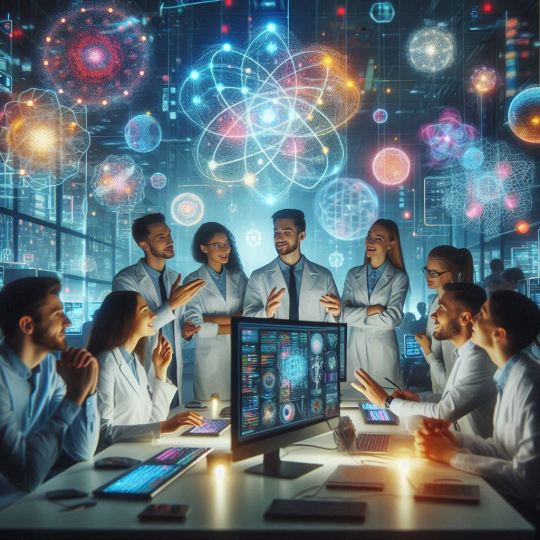
Nemotron-4 340B: Open Models for Synthetic Data Generation
NVIDIA has recently unveiled a groundbreaking family of open models called Nemotron-4 340B, designed specifically for generating synthetic data to train large language models (LLMs) across various industries. This innovative development promises to revolutionize the way we approach LLM training and unlock new possibilities in diverse domains.
The Nemotron-4 340B models offer a powerful solution to one of the most significant challenges in the field of natural language processing (NLP) – the scarcity of high-quality training data. By leveraging these open models, researchers and developers can generate synthetic data at an unprecedented scale, enabling more efficient and effective training of LLMs for a wide range of applications.
Key Features:
The Nemotron-4 340B family comprises several model variants, each tailored to specific use cases:
Nemotron-4-340B-Base: The foundational model, serving as the backbone for synthetic data generation.
Nemotron-4-340B-Instruct: A fine-tuned variant optimized for English-based chat and conversational use cases.
Nemotron-4-340B-Reward: Another specialized variant within the family, designed for specific tasks.
One of the most compelling aspects of the Nemotron-4 340B models is their accessibility. NVIDIA has made these models available under the NVIDIA Open Model License Agreement, allowing for free use for both research and commercial purposes. This open approach fosters collaboration, innovation, and accelerates the development of advanced NLP applications.
Performance and Evaluation
The Nemotron-4 340B models have demonstrated competitive performance on various evaluation benchmarks, showcasing their efficacy in generating high-quality synthetic data. Remarkably, over 98% of the model alignment data used during training was synthetically generated, highlighting the potential of these models to overcome data scarcity challenges.
Deployment and Scalability
Designed with scalability in mind, the Nemotron-4 340B models are sized to fit on a single DGX H100 system with 8 GPUs, enabling efficient deployment and utilization of resources. This scalability ensures that these models can be leveraged by a wide range of organizations, from academic institutions to large enterprises.
Synthetic Data Pipeline
In addition to the models themselves, NVIDIA has open-sourced the synthetic data generation pipeline used during model alignment. This transparency not only promotes reproducibility but also empowers researchers and developers to understand and potentially extend or modify the pipeline to suit their specific needs.
The introduction of the Nemotron-4 340B models represents a significant milestone in the field of NLP and synthetic data generation. By providing open access to these powerful models, NVIDIA is fostering a collaborative ecosystem where researchers, developers, and organizations can collectively push the boundaries of natural language understanding and AI applications. As the demand for LLMs continues to grow across various industries, the Nemotron-4 340B models offer a promising solution to the data challenges that have traditionally hindered progress in this domain.
0 notes
Photo
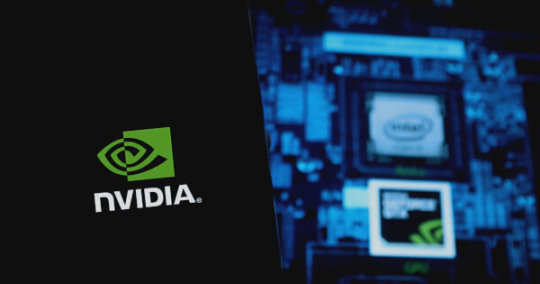
NVIDIA Enhances TensorRT-LLM with KV Cache Optimization Features
0 notes
Link
In large language models (LLMs), choosing the right inference backend for serving LLMs is important. The performance and efficiency of these backends directly impact user experience and operational costs. A recent benchmark study conducted by the Be #AI #ML #Automation
0 notes